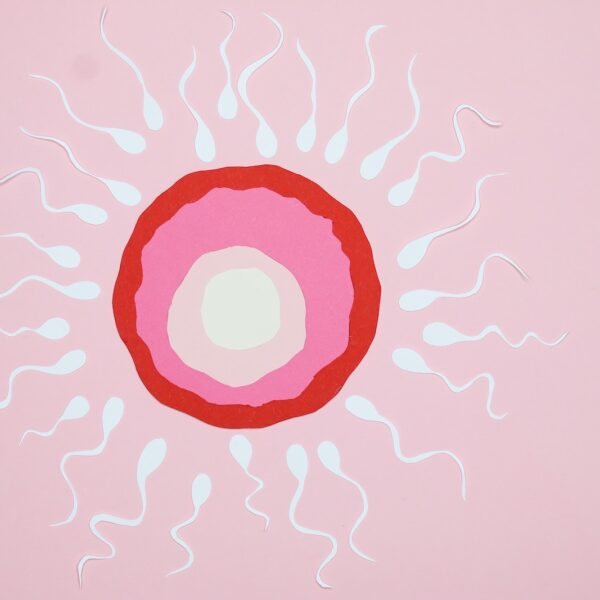Persistent Genital Arousal Disorder (PGAD) is a sexual dysfunction that can cause unrelenting genital arousal and engorgement without any sexual stimulation or desire. This condition is very rare and can be debilitating. Some patients with PGAD link their symptoms to certain antidepressants such as SSRIs.
The onset of PGAD can be caused by physical trauma or by medication. For example, a woman may develop PGAD after a stroke, or her estrogen levels decrease with menopause.
Hormones that cause orgasms
In women, orgasm is a very intense pleasure that occurs at the peak of sexual arousal. It is a feeling that comes from the release of sexual tension, and it can be triggered by masturbation, fantasy, certain medications, including selective serotonin reuptake inhibitors (SSRIs), vibration or pressure on the pudendal nerve, and even vaginal lubrication. Women who experience a lack of orgasm may have a neurological condition, such as spinal cord injury or lichen sclerosus, that interferes with orgasms – This part comes from the portal’s editor Divine Intimacy. In some cases, it is also a sign of poor physical or mental health. Talking to a sex therapist or gynecologist can help.
Female orgasms are a complex process that involves muscle contractions, flushed skin, and hormone releases. During the orgasm, a woman’s erogenous zones become very sensitive to touch and her body may start sweating. Her clitoris and penis can also become erect. A woman’s breathing rate and heart rate increase during orgasm, and she may sneeze or vomit.
During orgasm, the genitals and anus contract, which often leads to ejaculation. The climax is then followed by the resolution phase, which is when blood flow returns to normal and hormone levels drop. During this phase, the muscles in your genitals and anus contract repeatedly and last for several seconds. During the resolution phase, the brain produces surges of dopamine and serotonin, which causes feelings of pleasure throughout the body.
Hormones that cause arousal
For women, hormone levels can have a profound effect on sexual desire. A woman’s hormone levels may increase or decrease during various times of her menstrual cycle, causing her to experience high libido at some times and low libido at other times. This fluctuation is due to changes in the levels of hormones that regulate arousal and orgasms. These hormones include estrogen, progesterone, and testosterone.
Many studies have shown that arousal and sexual desire for females peak during the ovulatory phase, which usually lasts five to six days. During this time, the body secretes a large amount of estrogen and luteinizing hormone to trigger ovulation. This combination of these hormones can greatly enhance a woman’s ability to orgasm and can also increase her level of satisfaction during sexual activity.
During the ovulatory phase, the body produces other hormones that can help to stimulate arousal and orgasms, such as prolactin and oxytocin. These hormones act on a number of different receptors in the brain to induce orgasms and increase sexual arousal. However, these hormones are not as powerful as estrogen and oxytocin, so they can only be used in conjunction with those two.
Hormones play a critical role in the ovulation and orgasm process, but they are also important for maintaining overall health and well-being. To maintain a healthy lifestyle, it is important to take care of your body and optimize your hormone levels with nutritional balance, exercise, and strategies for stress reduction.
Hormones that trigger orgasms
The experience of orgasm is a powerful feeling of pleasure that occurs in the genitals and throughout the body. It causes a release of feel-good chemicals called endorphins. This is why people often feel sleepy and relaxed after orgasms. In addition, the muscles in the vagina and anus contract rhythmically, causing ejaculation. While sex typically triggers orgasms in men and women, they can also be caused by other sources of stimulation, such as fantasy or certain medications. Additionally, transgender individuals may orgasm after gender reassignment surgery.
A number of different hormones are released during orgasm, including the bonding hormone oxytocin and the milk-producing hormone prolactin. The oxytocin hormone is released during sex and breastfeeding, but it can also be produced by other types of sexual stimulation, such as masturbation. Another important hormone released during orgasm is testosterone, which stimulates erections and increases sexual desire.
Scientists have discovered that orgasms involve the arousal of several areas in the brain, especially in the lateral orbitofrontal cortex. This area is associated with emotions and self-control, and its deactivation during orgasms can lead to sexual inhibition and performance anxiety. Furthermore, researchers have found that orgasms can induce a rise in blood pressure and heart rate, as well as a change in the levels of hormones adrenaline, noradrenaline, cortisol, LH, FSH, beta-endorphin, and prolactin.
Hormones that trigger arousal
Female sex hormones (estrogen, progesterone and testosterone) influence both the desire for sex and the ability to experience orgasm. However, their effects are individualized and differ from person to person. Hormone levels also fluctuate throughout the menstrual cycle. For example, during the ovulatory phase (which lasts about five to six days) women experience high levels of sexual desire and libido. This is because ovulation coincides with an increase in both estrogen and progesterone.
During this period, the ovaries release an egg that is then fertilized with sperm. As an evolutionary adaptation, the shorter ovulatory period was created to allow women to have children in a short time frame. During this time, the sex hormones secreted by the ovaries increase libido and boost the ability to orgasm. However, the ovulatory phase can be very different for each woman.
While previous studies have reported that women’s mating behavior and preferences are related to ovarian hormone levels, it is unclear which specific psychosexual facets of the women are affected. The current study sought to address this issue by investigating hormonal predictors of general sexual function and arousal, as well as sexual activity frequency and initiation.
The results from this study suggest that oestradiol, testosterone and certain peptides such as oxytocin (OT), b-endorphin and PRL may have both excitatory and inhibitory effects on sexual arousal. The role of testosterone in the human male is less clear, although it seems to have a direct impact on arousal in hypogonadal men via the release of nitric oxide that constricts blood vessels.




Leave a Comment